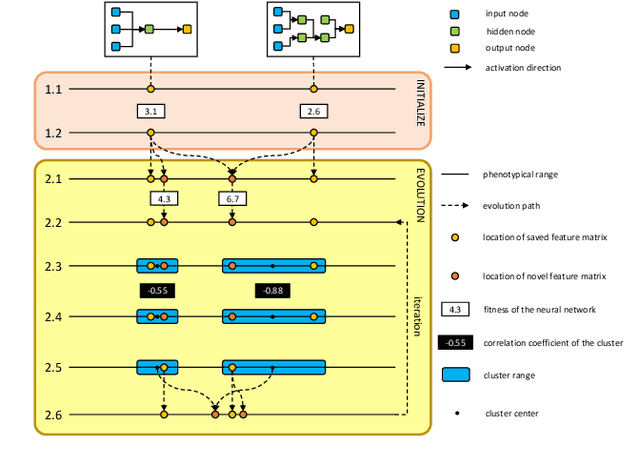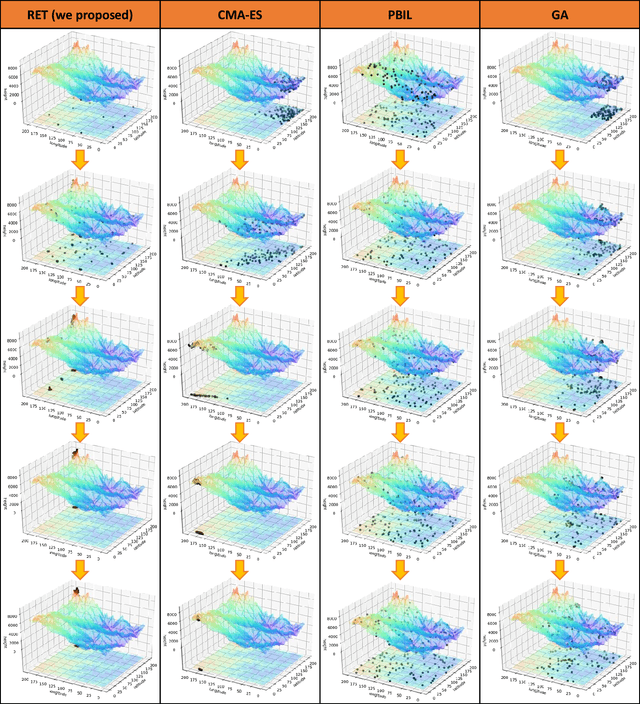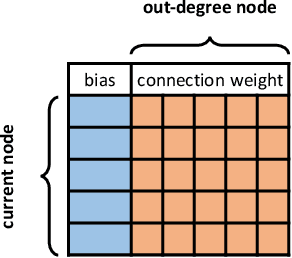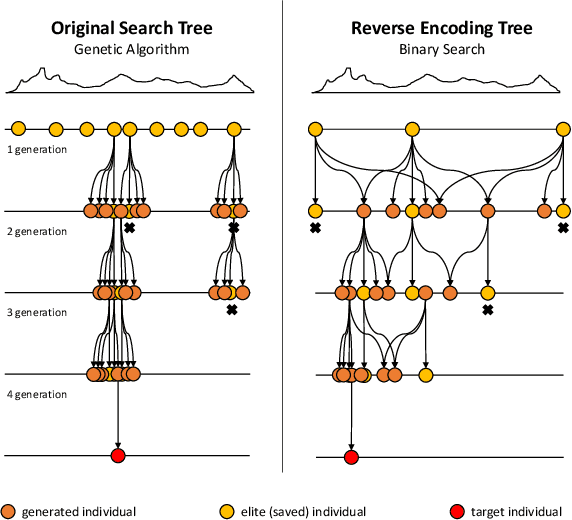Haoling Zhang
Evolving Neural Networks through a Reverse Encoding Tree
Feb 03, 2020



Abstract:NeuroEvolution is one of the most competitive evolutionary learning frameworks for designing novel neural networks for use in specific tasks, such as logic circuit design and digital gaming. However, the application of benchmark methods such as the NeuroEvolution of Augmenting Topologies (NEAT) remains a challenge, in terms of their computational cost and search time inefficiency. This paper advances a method which incorporates a type of topological edge coding, named Reverse Encoding Tree (RET), for evolving scalable neural networks efficiently. Using RET, two types of approaches -- NEAT with Binary search encoding (Bi-NEAT) and NEAT with Golden-Section search encoding (GS-NEAT) -- have been designed to solve problems in benchmark continuous learning environments such as logic gates, Cartpole, and Lunar Lander, and tested against classical NEAT and FS-NEAT as baselines. Additionally, we conduct a robustness test to evaluate the resilience of the proposed NEAT algorithms. The results show that the two proposed strategies deliver an improved performance, characterized by (1) a higher accumulated reward within a finite number of time steps; (2) using fewer episodes to solve problems in targeted environments, and (3) maintaining adaptive robustness under noisy perturbations, which outperform the baselines in all tested cases. Our analysis also demonstrates that RET expends potential future research directions in dynamic environments. Code is available from https://github.com/HaolingZHANG/ReverseEncodingTree.
 Add to Chrome
Add to Chrome Add to Firefox
Add to Firefox Add to Edge
Add to Edge